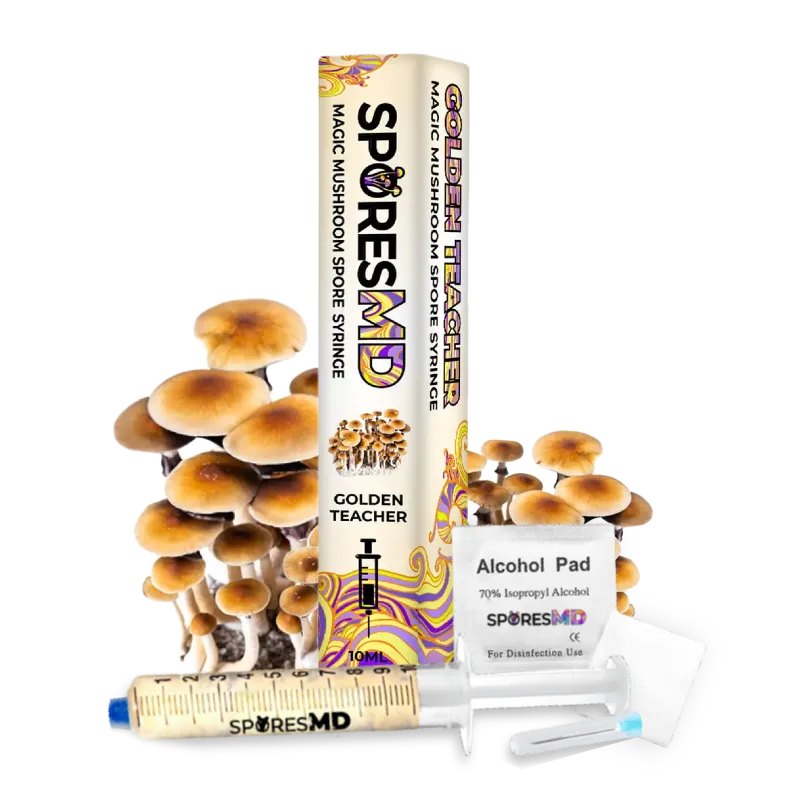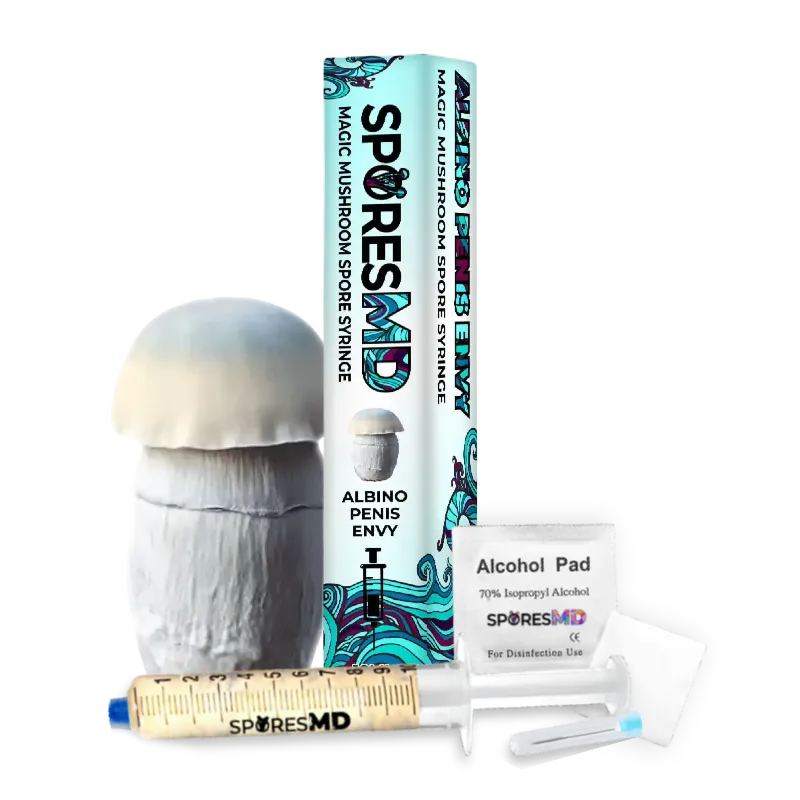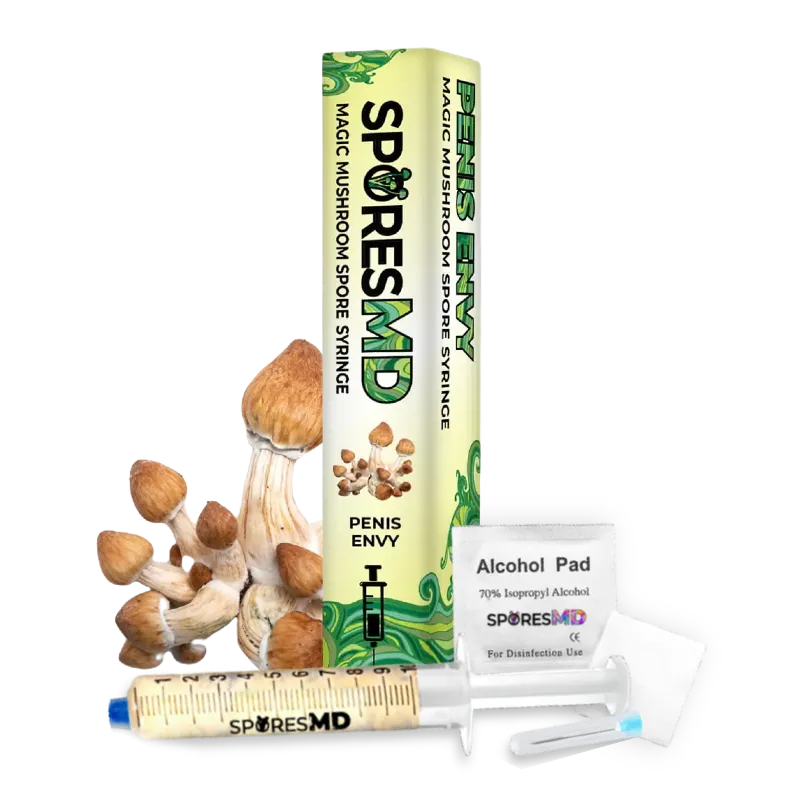Ever wondered about the lifespan of mushroom spores? How long they can remain viable? Or perhaps, if they expire at all? You’re not alone. The world of mushroom spores is intriguing, filled with queries about their storage, handling, and longevity.
In this article, we’ll delve into the fascinating life of mushroom spores. We’ll tackle common questions like ‘Do mushroom spores expire?’ and ‘How long do spore syringes last?’ We’ll also explore the best environment for psilocybin spore colonization.
Get ready to uncover the secrets of mushroom spores, their longevity, and the critical role of the quality of your initial spore syringe. It’s time to unlock the mysteries of these tiny life forms and their journey from nature to your home laboratory.
Key Takeaways
- Mushroom spores can be surprisingly long-lived, staying viable for up to 30 days when stored in a laboratory-grade syringe at room temperature. Exceptional cases even show that a single dormant spore can retain its potential for a staggering 250 years.
- The lifespan of mushroom spores can be extended significantly through proper storage conditions. A consistent refrigerator temperature can prolong their viability to between four and twelve months.
- The quality of the spore syringe is a vital factor in the longevity of the mushroom spores. Syringes containing a sterilized water-spore solution are optimal for preserving the viability of the spores, potentially indefinitely, if used for microscopy.
- Mushroom spores initiate their lifecycle by landing on a suitable, nutrient-rich substrate, then absorb water and transform into a thread-like structure known as hyphae. This germination process is influenced by optimal temperature range, substrate’s pH level, and the spore’s survival capabilities during its dormant state.
- Deteriorated mushroom spores can be easily identified through changes in their color, an unusual smell, the presence of mold or bacteria, or their failure to germinate despite being in appropriate conditions.
- Although generally safe, some mushroom spores can induce allergic reactions in certain individuals due to the presence of allergens. Toxicity usually arises from consuming the mature fruiting body of certain mushroom species, not from the spores themselves. Proper care during storage and sourcing spores from reputable vendors can minimize these risks.
Understanding Mushroom Spores
Short on size but large on potential, mushroom spores carry a world of possibility. A critical factor in their potency, however, is the shelf-life. How long, then, do these microscopic wonders last?
Mushroom spores can remain viable for a surprising period. Left out at room temperature in a laboratory-grade syringe, these life seeds could theoretically last up to 30 days. Impressive, considering the minuscule size and delicate nature of these structures.
However, an essential discovery has changed our viewpoint, revealing that a single mycelium spore can remain dormant for an astonishing 250 years. This possibility opens up a new perspective on the potential lifespan of these spores.
Optimal storage conditions can even extend the life expectancy of mushroom spores. Preserved in a refrigerator at a constant temperature, away from light exposure, mushroom spores can stretch their life span up to an impressive four to twelve months.
An essential aspect is the quality of their containment. Syringes containing a sterilized spore-water solution ensure the mushroom spores’ survival and prowess, showcasing their capabilities for an indefinite period if used for microscopy.
This extensive viability is one reason why it’s crucial to get your spores from a reliable source. The longer they last, the more you can explore and study these extraordinary entities. Gaining understanding about mushroom spores provides a direct insight into nature’s remarkable abilities in the realm of fungi.
Lifespan of Mushroom Spores
In the optimal conditions, mushroom spores exhibit a surprisingly long lifespan. Blossoming from their dormant state, these spores can remain functional for a startling 250 years. This incredible longevity counters the common notion that spores lose their vitality quickly.
However, understand that this period of viability applies to the individual, single spore. Shake up the mix, place these spores into a syringe filled with water, their lifespan drastically narrows down. Limiting this viability further, the standard syringe storage at room temperature caps this longevity at merely 30 days.
Enhance this lifespan by taking advantage of a simple, household appliance – your refrigerator. Chilled storage conditions show a dramatic increase in the spores’ lifespan, extending the clock from months to a full year.
To summarize, it’s quite simple:
- Individually, a mushroom spore can lay dormant yet viable up to an impressive 250 years.
- Kept in a sterilized water solution in a standard syringe, spores maintain their viability for just about 30 days at room temperature.
- Store these syringe-contained spores in your fridge, the viability extends up to 12 months.
Remember this critical information as you explore and study these fascinating fungi. Always prioritize quality containment and rely on credible sources for your Spore Syringes to ensure accurate results and successful cultivation.
How to Store Mushroom Spores for Longevity
Remember, optimal spore longevity relies on proper storage techniques. Start with cleanliness. Ensure spores are collected in sterile conditions on clean paper or foil. This practice promotes spore adhesion after drying, enabling the formation of a detailed spore print. As a primary study tool, spore prints facilitate direct spore observation under a microscope.
Another technique involves the use of Spore Syringes. Essentially, spore syringes are a mixture of clean spores in sterile solutions enhancing direct microscopic examination of hydrated spores. Some enthusiasts opt for liquid culture syringes. This specific method incorporates living mycelium in a nutrient-rich broth solution, fostering the direct inoculation of hearty tissue into the substrate.
Bear in mind, prolonged spore viability demands optimal storage conditions. If available, consider refrigerated storage. This precautionary measure can amplify spore viability to a remarkable 12-month lifespan. In contrast, the average room temperature permits mushroom spores to remain viable for up to 30 days within a standard syringe.
As a rule of thumb, sourcing from dependable providers guarantees quality containment. Providers that offer a sterility guarantee on spore and culture products indicates high standards that extend product lifespan. Adhering to the advised 30-day cap on spore-related returns safeguards spore longevity. Moreover, matching the sterility of your storage medium with that of your provider boosts the chances for prolonged spore viability.
In the event of delayed inspections or returns, brace for additional shipping charges. Remember, a 20% restocking fee applies to all returned items. Returned items must remain in their original, unused condition. It’s also essential to maintain a lookout for other potential charges, such as service charges on returned checks.
In sum, proper storage is vital for spore longevity. From simple storage techniques to sterility precautions, every action can extend the life of your mushroom spores.
The Science Behind Mushroom Spore Germination
Digging deeper into mushroom spore nuances, let’s unfold the science behind their germination. Mushroom spores initiate their lifecycle when they land on a suitable substrate, generally moist and nutrient-rich. Their germination process begins by absorbing water, sparking a transformation into a thread-like structure, known as hyphae.
Not every spore on your slide germinates, it’s impacted by external conditions. The optimal temperature range for most mushroom spores to germinate falls between 70 and 75 degrees Fahrenheit. Temperature deviations can inhibit spore germination and even kill them.
Remember the dormant period for mushroom spores? A spore’s ability to stay inactive for up to 250 years becomes paramount here. This dormancy allows them to withstand unfavourable environmental conditions until they stumble upon the ideal substrate and temperatures, triggering the germination process.
Importantly, it’s not just about landing on correct substrates or surviving in varied temperatures. The pH level of the substrate also plays a critical role. Most mushroom species thrive on slightly acidic to neutral pH levels, ranging from 6 to 7.
Proper storage underscored in previous sections gains significance, considering these fragile features. A slip in any of these conditions, from temperature swings to unsuitable pH levels, can lead to reduced viability, and as a result, render your stored spores useless.
So, while exploring the world of mushroom spores under your microscope, consider their intricate lifecycle, storage requirements, and the delicate balance that guarantees their survival and germination.
Signs of Spoiled or Bad Mushroom Spores
Mushroom spores can become spoiled or bad when not properly cared for, posing several identifiable markers. Firstly, a change in the spore’s color. Normally, many spores range in color from white to brown, so watch out for any drastic deviations.
Secondly, an off smell. Healthy, viable spores lack a strong odor; however, presence of a strong, foul scent could indicate spoilage. Thirdly, the presence of mold or bacteria, visible as unusual layers of color or texture in the spore print or liquid culture, is a clear sign of contamination.
Finally, the inability to germinate, which could occur due to improper storage or age beyond their longevity. So, if you have had your spores for a while, it’s worth checking for their viability. If they fail to sprout on a suitable substrate under appropriate conditions, they’re likely spoiled.
But remember, purchasing from a reputable source such as yours truly (SporesMD) provides a sterility guarantee on spore and culture products, protecting you from receiving spoiled or unviable spores. Thus, always go for trusted vendors and keep the storage conditions optimal to ensure the longevity of your mushroom spores.
Bear in mind that returned items may carry a restocking fee, and shipping charges aren’t generally refundable. Plus, check payments might require clearance time. For expedited service, consider payment via credit card, cashier’s check or US Postal money order.
Some accommodations are placed if your cultures turn out to be unviable or contaminated. In such instances, contact your supplier to arrange for a replacement. Be aware though, no returns or refunds are usually issued for orders shipped outside the US.
Invoices might not be included in your order as standard, so make sure to specify this need in the “Special Instructions” during checkout if you require one. Handle your spore and culture products with care, prioritizing their sterility, cleanliness, and viability to prevent spoilage.
Understanding the Risks: Are Mushroom Spores Dangerous?
Mushroom spores, in general, pose little danger to healthy individuals. However, some mushroom species might produce spores that carry allergens, potentially inducing allergic reactions in susceptible people.
Exposure to high concentrations of these spores, particularly in closed environments, leads to symptoms such as sneezing, itchy eyes, and even more severe respiratory issues in extreme cases.
On another note, it’s worth noting some mushrooms are inherently toxic. But, fret not, their spores won’t cause harm unless they germinate, grow into fruiting bodies, and are consumed. Ergo, the danger emanates not from the spores but from the mature mushroom if it is a toxic species.
Moreover, you might wonder if mold mingles with your mushroom spores when purchasing them. Rest assured, reputable vendors go to great lengths to maintain sterility in spore and culture products. Vendors typically conduct card payments by phone to keep scams and frauds at bay, assuring you of secure transactions and uncontaminated products.
Lastly, remember that proper storage holds paramount importance, as failure to store spores correctly might render them nonviable or lead to contamination. Hence, if you ensure you source your spores from reputable vendors and store these correctly, there’s little reason to worry about the risks posed by mushroom spores.
Conclusion
So, you’ve got the lowdown on the lifespan of mushroom spores. It’s all about balance – the right substrate, temperature, and pH levels can make all the difference. Remember, spore dormancy can also play a part in their longevity. You’re now aware of the signs of spoiled spores, and the importance of sourcing from vendors who guarantee sterility. While mushroom spores are generally safe, it’s good to be mindful of the potential allergenic properties of some species. You’ve learned that proper storage is key to maintaining spore viability and reducing contamination risks. Armed with this knowledge, you’re ready to delve into the fascinating world of mushroom cultivation with confidence.

![Understanding Mushroom Spores: Lifespan, Storage, and Signs of Spoilage [2024 Guide]](https://sporesmd.com/wp-content/uploads/2024/04/sU0lSkiRXMQce_D3euAdy.jpeg)



